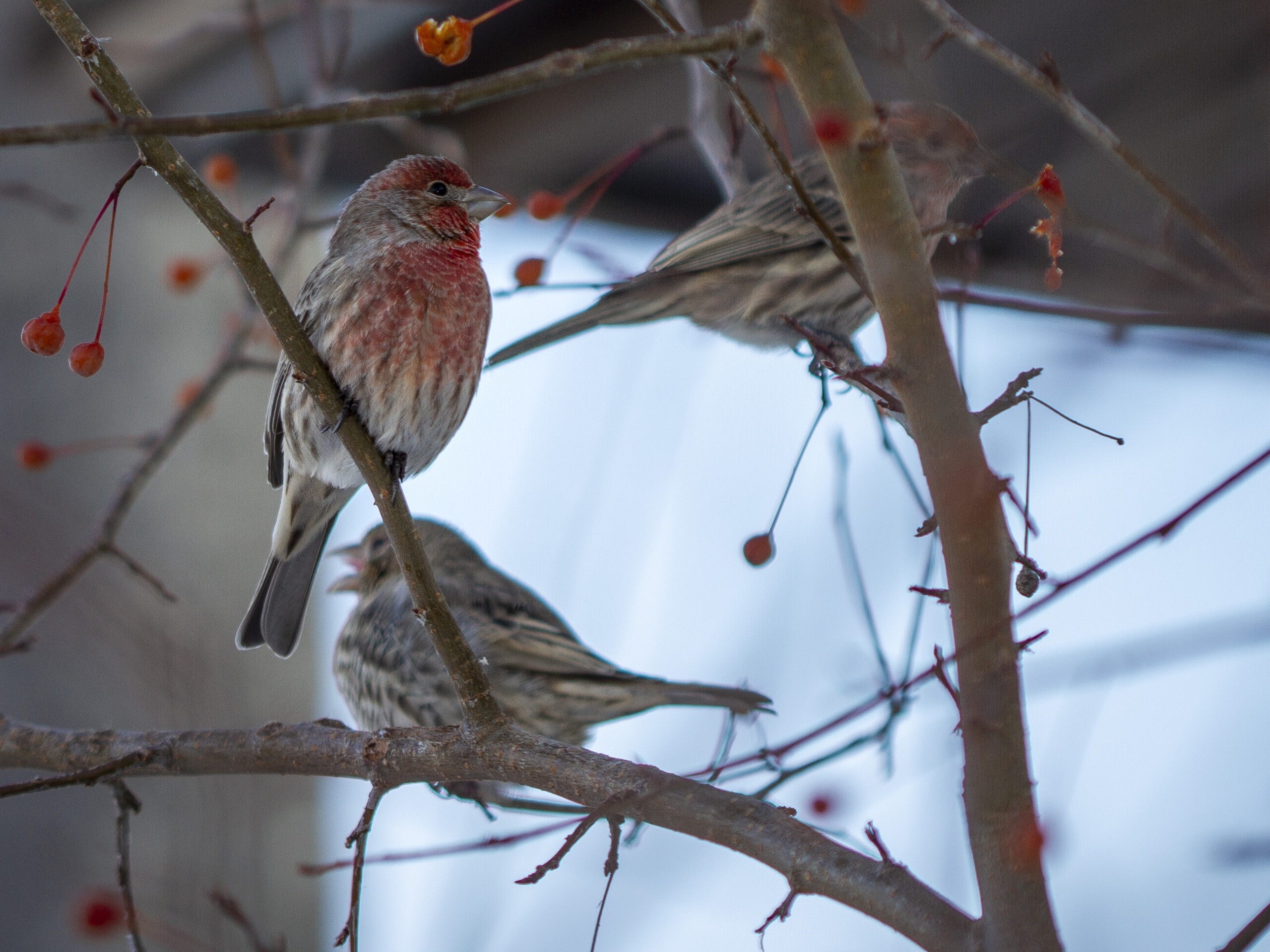Embracing the snag

Photo by Deborah Maier
You may have noticed as you drive around the city that there are some sad-looking, seemingly barely alive, trees left standing along the boulevards. If you are like me, you may have wondered why limbs are being pruned off, but the tree is not being removed … surely, wouldn’t it be better to remove it and replace it?
Dead and dying trees provide an important habitat. These standing trees are called “snags”. Many woodpeckers live in cavities of dead or dead areas of dying trees, including the downy woodpecker and the northern flicker that are commonly seen in Calgary. Chickadees are cavity dwellers. Some owls nest in cavities, as well. Bats, too.
While the flicker nest is usually found at the top of the tree, chickadees will nest close to the ground. This spring, in the Wall Garden at the Botanical Gardens of Silver Springs, I watched a chickadee come and go several times from a hole at the base of an old lilac.
Not only do these trees provide shelter for cavity dwellers, but they also offer twigs for nest building. Magpies, crows, and squirrels use twigs in their nests. The aging, flaking bark provides a habitat for all kinds of insects, and that makes the tree a food source for insect-eating critters.
Perhaps, I have made a case for keeping these boulevard trees around for a while, but how does it relate to the home garden? Last winter, many shrubs lost branches to winter kill and some even died. In the fall the weight of a wet snowfall caused branches to break.
Some gardeners’ shrubs died because voles ate too many of the roots. The usual advice is to prune out the dead woody plant material and place the material in the City’s green bin. Maybe this material should be kept and incorporated as a resource in the garden instead.
In the Society’s old garden, a tree had died. It is expensive to remove trees. This one had the additional challenge of being in an area near several above-ground telephone and power lines. Instead of removing it, the snag was used to grow hops vines. The fast-growing hops vine would quickly cover the old trunk and branch stumps in the bright green hops leaves.
In my own yard, all the old growth of a Nanking cherry in the back garden died. It was next to my bird feeder and a favourite hangout spot for chickadees, house finches, and sparrows waiting their turn to eat. I thought the birds would miss it, so I let it be. Before I knew it, the Alpina clematis growing nearby found it and covered it with leaves and flowers.
During that fall snowstorm, that I mentioned earlier, a major branch on my apple tree was broken. It was a living branch, so it was important to prune off the limb and make a clean cut to remove the ragged and cracked branch remnants. The clean cut will help the wound heal and help prevent insects and diseases from entering the tree tissue.
While normally that branch would have been cut into pieces that fit in the green bin, instead I took tree-like pieces and “planted” them as deer deterrents around my apple and pear seedlings and grapevine. Not even deer like getting poked in the face by sticks. It provided a more interesting garden winter scape than the tomato cages I usually place around them in the fall.
Last spring at an Open Garden, one gardener talked about a tree that was coming to the end of its life. He was thinking about removing it, but noticed a bird was nesting in it so he was putting it off. This spring when I visited, the dead tree was still in the garden, but now it was a trellis for clematis.
In the past, we were quick to remove any “unsightly” dead woody plants. We also spend money on buying “natural-looking” trellises made from tree branches and other woody materials. Why not embrace the snag and make it a valuable and interesting garden element?
To learn more about gardening the Calgary area, visit the Society’s website, calhort.org.
